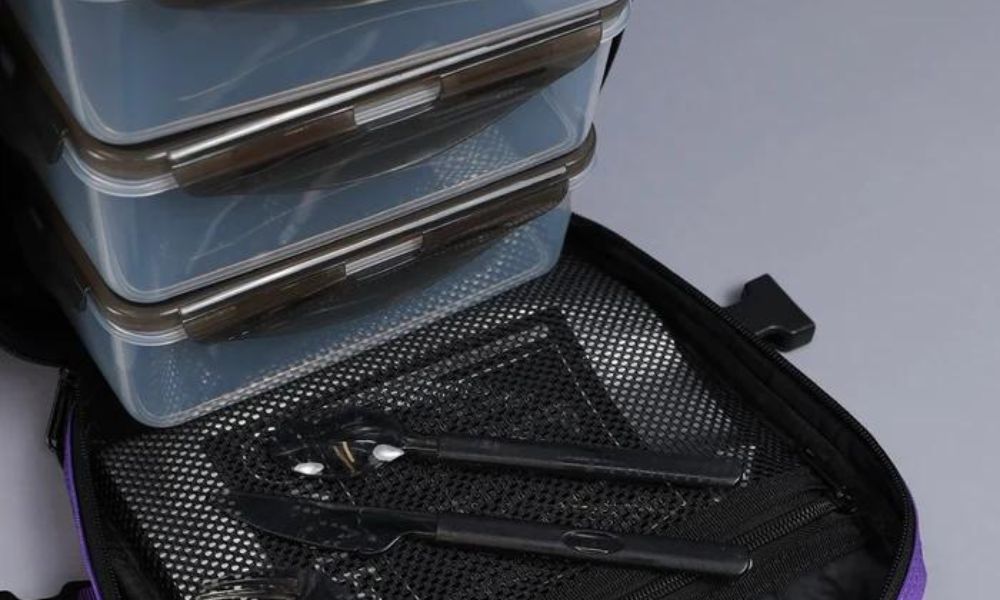There is a dizzying array of backpacks on the market today, but two main ones are tactical and hiking backpacks. Even though many companies refer to these packs interchangeably, there are key differences. Read on for the differences between tactical and hiking backpacks to ensure you get the right pack for you.
Design & Construction
Hiking backpacks have a simple design that aids hikers in navigating trails comfortably. A hiking backpack is akin to a normal school bookbag because the straps are adjustable. And because hiking backpacks are meant to carry gear over long distances, they are generally lighter and easier on the shoulders.
Tactical backpacks, on the other hand, are universal in construction and don’t provide as much flexibility as hiking backpacks. This is because the build of the standard soldier is the inspiration behind tactical backpacks. Also, these packs are usually heavier than hiking backpacks, but for a good reason because they will be with you through thick and thin.
The access to each bag is also vastly different. Most hiking backpacks only open from the top, whereas the best tactical bags have tri-zip arrangements that give you access to the main compartment when you lay the bag flat.
Holding Capacities
Many tactical backpacks have a capacity typically between 15–20 liters. There are greater capacity tactical bags, but the larger, non-standard sizing may entail a higher price tag. On the other hand, hiking backpacks are as small as 30 liters and can be as larger as 110 liters, depending on the type of hiking they are designed for.
For both styles of backpack, one thing to consider regarding capacity is water bladders. Using a water bladder is less cumbersome than lugging bottled water on the side of the pack. However, the hydration pocket could take up room in the main compartment. Although most water bladders are slim and provide little hindrance, you should consider this factor when choosing the size of your pack.
Durable Materials
Hiking and tactical backpacks serve two different purposes. For people who need a hiking backpack, they’re not necessarily concerned about its durability as much as they are about its weight and waterproofing capabilities.
Tactical backpacks are for survival; hence, they require tougher materials that can endure the elements and withstand the test of time. Of course, hiking backpacks are also durable, but they pale in comparison to their tactical counterparts.
Hiking backpacks are usually made of ripstop nylon that decreases tearing and is waterproof. However, a tactical backpack uses Cordura, polyester, and nylon to make a backpack that is resistant to damage from the weather and anything else you could encounter.
Metal Frames
Both hiking and tactical packs may have metal frames for additional support. These frames enable the user to tote heavier bags by efficiently dispersing weight better than just broad, cushioned straps. Yet each frame offers different benefits, so you’ll want one that assists in your activities.
The visible frame components of an externally framed backpack make it easy to identify. These packs feature a box form and are useful for well-maintained paths. Using them for bushwhacking would be unpleasant and tricky, since the pack would grab branches and other obstructions.
Internal-frame backpacks give the same support as external-frame backpacks but with a thinner design that conforms to your body. This is an excellent option if you’re heading off the beaten path, since it keeps the weight of your stuff closer to your body. Internal-frame packs increase your center of balance and let you glide more easily through the terrain.
Expansion Possibilities
Modular Lightweight Load-Carrying Equipment (MOLLE) plays an integral part in choosing the best backpack, considering it helps you get the most out of your bag with several expansion options. MOLLE is a series of webbing straps that join extra accessories without interfering with the backpack’s primary function.
MOLLE originated from tactical backpacks, so there’s no question which backpack has the most expansion capabilities. Very few hiking backpacks allow for extensive customization. Generally, what you see is what you get in a hiking backpack. Therefore, tactical backpacks are a tremendous help for someone who wants to add a handful of purpose-specific compartments for unique items. At the very least, a tactical backpack and its MOLLE advantage can provide easier access to items than hiking backpacks.
The unlimited potential of adding attachments to a tactical backpack is why many folks gravitate toward them. However, the more additions you make, the more you risk making your pack unbalanced and a burden.
Organizational Capabilities
In the same vein, with expansion comes organization. You can stay organized with the multiple expansion attachments that a tactical backpack allows. Each compartment has a specific purpose, and you can pack whatever you see fit. For example, if you want quick access to a firearm or cutting tool, a tactical pack allows for it. Moreover, these attachments come with zippers or Velcro to ensure your items don’t fall out unbeknownst to you.
Hiking packs have a more rucksack style, where most everything goes into the main compartment. Digging through everything you brought to find a particular item in a hiking backpack can be a hassle. Because of this, hiking backpacks are best for people who don’t need quick and constant access to items from their pack.
Colors
What a hiking backpack lacks in attachments, it makes up for in color. Hiking packs come in various colors in high-visibility hues that make the bearer easier to identify from afar. Oranges, yellows, and bright greens can pop far away, ensuring other hikers or hunters can see you. And this high visibility could also be beneficial in emergency situations, such as being lost.
Tactical backpacks are meant to make the wearer blend in, so bombastic colors aren’t their forte. Usually, tactical backpacks are in low-observable colors like tan, dark green, olive green, dark gray, or black. A mixture of these colors as a form of camo is also common.
However, color shouldn’t be the deciding factor between these two packs, as you can always add a removable cover or rainfly to make your pack either brighter or more camouflaged. Many of these coverings are also reversible, so you’ll be prepared for any situation.
Knowing the differences between tactical and hiking backpacks gives you a solid understanding of the type of pack you need for your adventures. Each has exclusive benefits: Tactical backpacks are more rugged, covert, and customizable. Conversely, hiking backpacks are more lightweight, colorful, and capable.
If a mini tactical bag suits your style, WOLFpak is the place for the most durable and effective packs! Browse our selection online, or feel free to contact our customer support team if you have any questions.

Read more

Use these tips for getting started with meal prepping to ensure you have a fridge and freezer full of the yummiest nutritional food to last you the week.

What you need to know for dog travel.












1 comment
Hello, would you like grow Website Traffic, Sales & Conversions? Don’t know what to do? Start Your Free Trial | Pay Later | No Contract
I am a Digital Marketing Expert and I do SEO (Search Engine Optimization) grow website traffic, Website Rankings (Google, Yahoo, and Bing) & Organic results. I am a Software Engineer with more than 12 years experience in Digital Marketing.
We improve these results:
• Website Traffic
• Website Rankings ( Google, Yahoo & Bing)
• Organic results
• SERPs
• Increase Conversion rate
Client’s store results – https://rivalinfotech.com/project-results
Start Free Trial: https://rivalinfotech.com/seo-pricing/
Thank you
Sam Morkel
Leave a comment
This site is protected by hCaptcha and the hCaptcha Privacy Policy and Terms of Service apply.